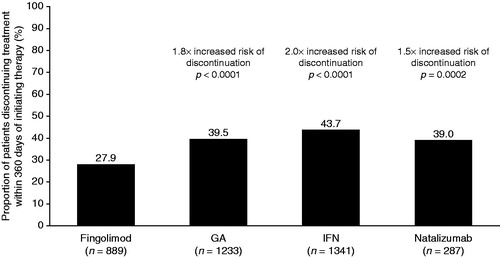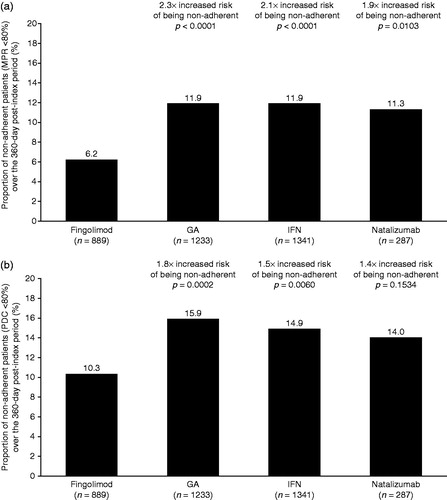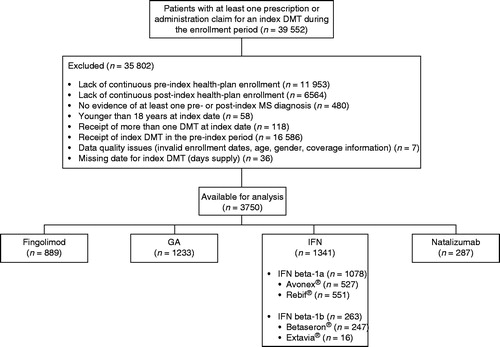Figures & data
Table 1. Baseline demographics and clinical characteristics (in the 360-day pre-index period) of patients with MS included in the index cohorts.
Figure 2. Proportion of patients with MS who discontinue index DMT within 360 days of initiating therapy. The risk of discontinuing treatment with the index DMT was estimated using a Cox proportional hazards model, adjusting for pre-index demographic and clinical characteristics of interest. DMT, disease-modifying therapy; GA, glatiramer acetate; IFN, interferon; MS, multiple sclerosis.

Table 2. Cox proportional hazards model of variables affecting risk of discontinuing index disease-modifying therapy in patients with MS.
Figure 3. Proportion of non-adherent patients with MS, measured as MPR <80% (a) or PDC <80% (b) during the post-index persistence period and the risk of being adherent to therapy for each cohort over the 360-day follow-up. The risk of being non-adherent to index DMT was estimated in patients with at least two claims during the persistence period using a logistic regression model, adjusting for pre-index demographic and clinical characteristics of interest. GA, glatiramer acetate; IFN, interferon; MPR, medication possession ratio; MS, multiple sclerosis; PDC, proportion of days covered.

Table 3. Regression analysis of variables affecting odds of being non-adherent (MPR <80%, PDC <80%) to index DMT in patients with MS with two or more claims for their index DMT.

